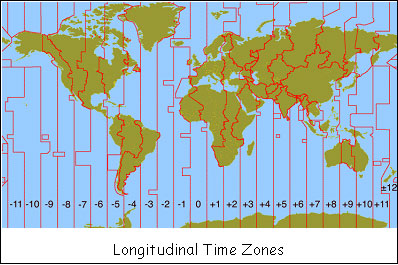What is Time?
From Sundials to NTP
Time is an abstract concept. We cannot necessarily see it, touch it or change it, but we are aware that it exists and that is continues to keep passing us by. It has long been thought that time was constant and was the same everywhere in the Universe.

However, Albert Einstein's theories of relativity (General and Special Relativity) have changed the way we think about time. Einstein suggested that time is part of a four dimensional 'space-time' the other three dimension being the up/down, left/right, forward/backward dimensions we are all aware of.
Einstein suggested that this space-time could be bent or warped by the effects of gravity meaning that an observer on the moon with an identical clock to an observer on the Earth, will find that when they compare the clocks, the passage of time will be recorded differently, as the extra gravity of earth will have bent space-time more so than on the moon.

In fact Einstein suggests not only is time part of the very fabric that makes up our universe, it is not constant but relative to different observers and that the only constant in the universe is the speed of light. He argued that to different observers, time would be perceived differently depending on their positions and speed. For example, to an observer travelling to a destination at near the speed of light the journey may only take a few seconds, but to another observer awaiting their arrival, the time elapsed since the traveler departed may have been thousands of years.
While this time dilation, as Einstein called it, is very apparent at high speeds (approaching the speed of light) experiments with atomic clocks sent on aeroplanes discovered time does pass differently than with identical clocks on the earth. Einstein's work was groundbreaking and made possible technologies such as satellite communication and GPS (Global Positioning system) all of which have to account for Einstein's relative time.
Time has always been measured in relation to the movement of the Earth, a day, for instance, is one revolution of the planet, while a year is an entire orbit of the Sun. The measurement of time is known as Horology and different ways of telling the time have been developed throughout the centuries from the sundial to grandfather clocks.
Today electronic clocks are more commonly used and are based on the movement of a crystal oscillator ' a vibrating crystal used to create an electric signal that has an exact frequency. However, in many modern applications, such as the stock market or the airline industry, exact and precise time keeping is essential.
UTC (Universal Coordinated Time or Temps Universel Coordonn' ) was established after the development of atomic clocks which can measure time to an exceptionally accurate level using the frequency of the caesium -133 atom which oscillates at exactly 9,192,631,770 every second. Since 1967 this oscillation has been the definition of one second by the International System of Units (SI).

Around the world, time is split up into time zones that are longitudinal. All time zones are generally one hour apart and they all use UTC time as a reference to calculate their local time.
The development of atomic clocks has been vital for modern technologies, allowing computer networks all over the world to be synchronized to UTC utilizing Network Time Protocol (NTP), a computer protocol designed specifically for the task. For a list of NTP products, including digital wall clocks.
Without NTP servers, atomic clocks and UTC; technologies and industries such as communication satellites, the stock exchange and even airline companies would find it impossible to operate in the modern world.